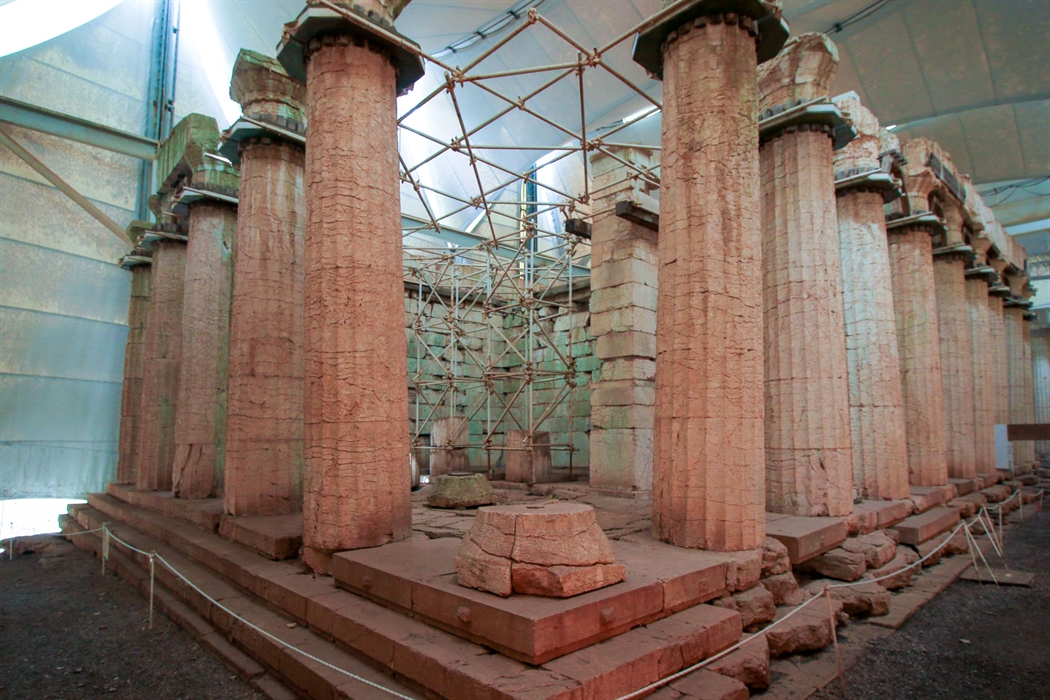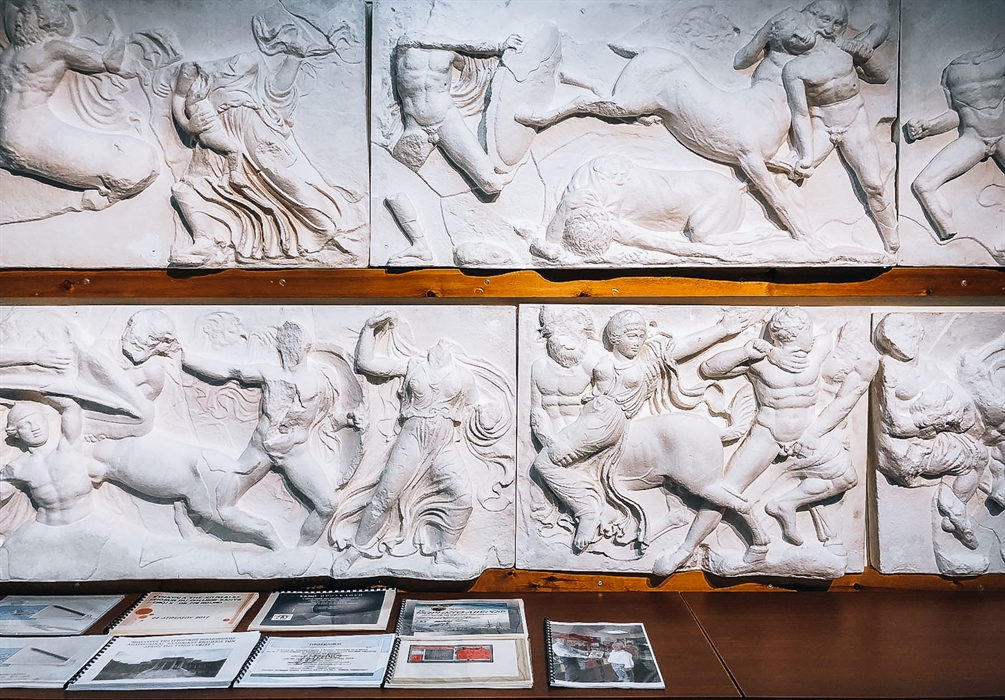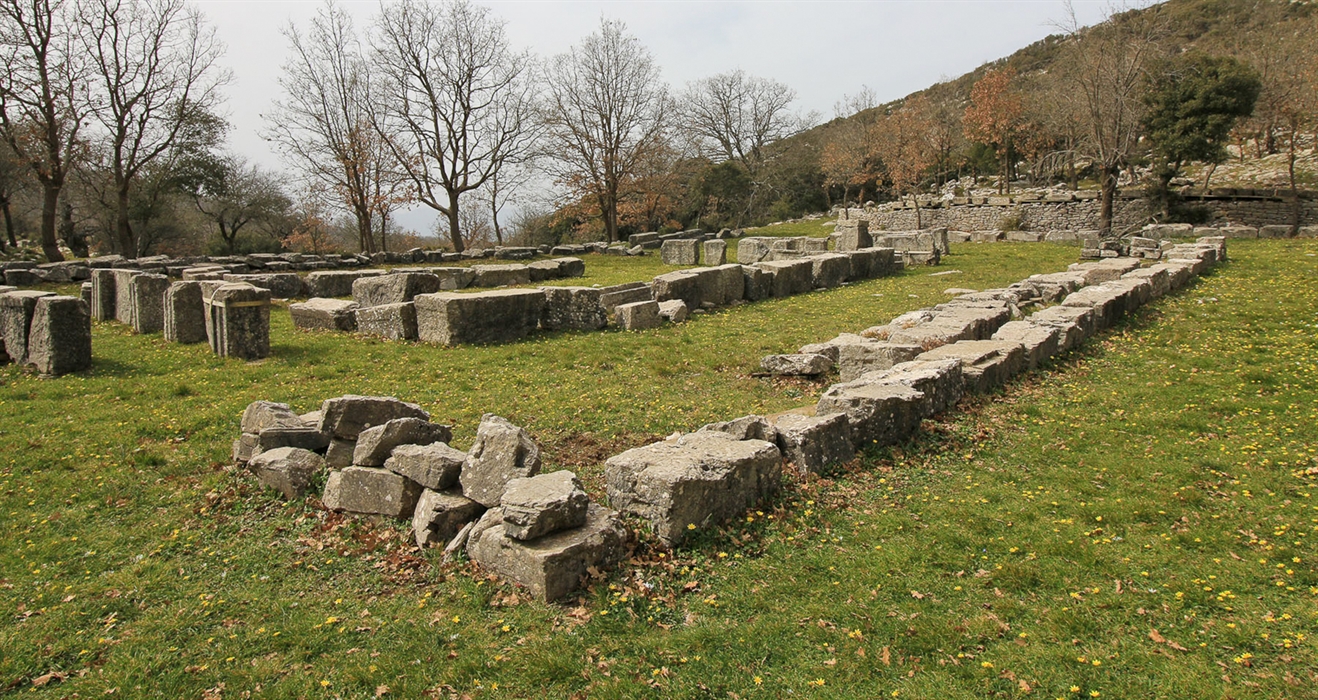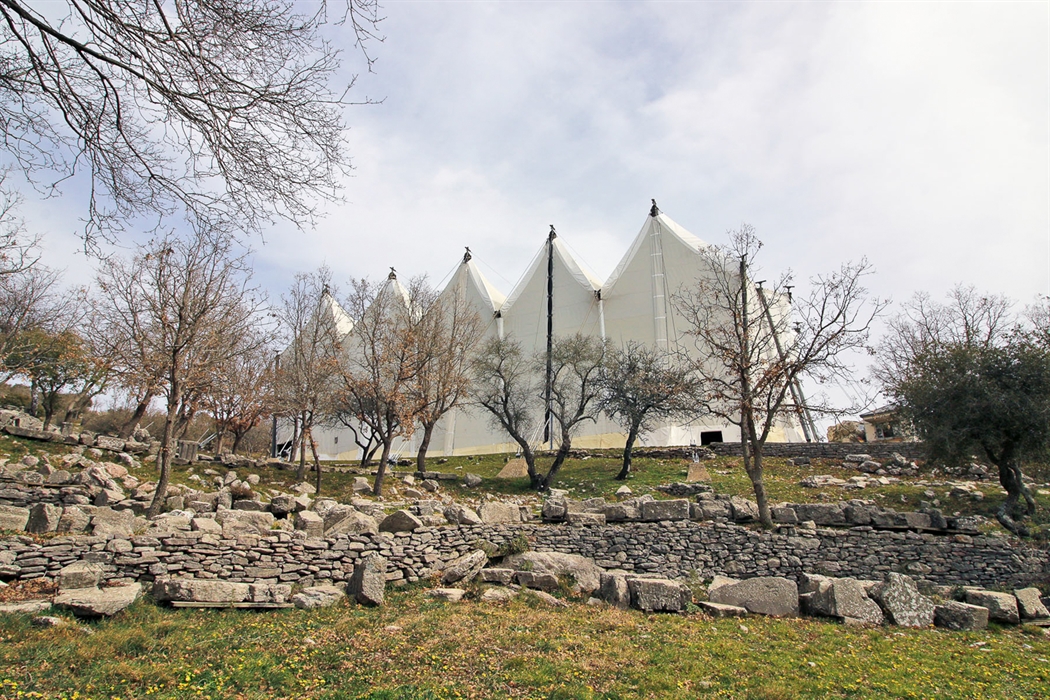The Temple of Apollo Epicurius at Βassae
Although it is situated in an isolated location, at Bassae, Arcadia, this amazing temple is famous worldwide. It was the first Greek ancient temple that was included in the list of UNESCO World Heritage Sites, in 1986. As far as architecture goes, it combines Doric, Ionic and Corinthian elements -which makes it unique. The temple we see today was built around 420-400 BC in classical times and, according to Pausanias, was the work of Iktinus the architect of the Parthenon in Athens.
The Temple of Apollo Epicurius is situated at the Bassae plateau, 1,131 m above sea level on Mount Kotilion near Ancient Phigaleia. Which means that as well as a fascinating glimpse into Greek history, you also get a panoramic view thrown into the bargain
In 1986 this amazing monument was declared a UNESCO World Heritage Site. But UNESCO were by no means the first to recognise the temple as being something special -Greek traveller Pausanias described it as the second most beautiful and harmonious temple in the Peloponnese, after that of Athena Alea in Tegea.
Since 1987 the monument has been enclosed in a huge tent-like protective shelter, but despite this it is still an impressive sight. The temple was very innovative in terms of its layout, its interior and exterior. One of its peculiarities is that it combines Doric, Ionic and Corinthian architectural orders (Doric elements on the exterior, Ionic elements in the interior, and columns with Corinthian capitals).
The temple you can see today was not the first to be built on the site. The worship of Apollo in the area of Bassae goes back to the 8th century BC. Most of the finds from this era are weapons, indicating that a god of war must have been worshiped here. The area probably got its Greek name Vasses because of the landform with many small valleys (vassai or vessai). At the end of the 7th century BC the Phigalians dedicated the sanctuary to Appollo as they believed that he had helped them to take their city back from the Spartans in 659 BC. They continued to worship Appollo, especially as they believed that the god had saved them from the plague in 429 BC.
During archaic times there was probably a shrine in the area, with one or two temples built around 600 and 500 BC. The temple we see today was built around 420-400 BC in classical times and, according to Pausanias, was the work of Iktinus the architect of the Parthenon in Athens. The architect managed to combine many archaic features, which were required by the conservative religious tradition of the Arcadians, with the new features of the classical era. Unlike most temples, it does not face east, but from north. It was built mainly of local limestone, but some parts of the ceiling, the capitals of the columns in the cella (inner sanctum) and the sculptured decoration are of marble.
This is the only Greek temple to combine elements of all three classical orders used in ancient Greek architecture. The peripteral temple, with a pronaos, an adyton and opisthodomo, is Doric. The temple has 6 columns on the narrow sides and 15 on the long sides, so it is and elongated oblong shape, like an archaic temple. Inside the cella, there are five Ionic semi-columns along the long sides. One of these columns had the oldest known Corinthian capital in ancient Greek architecture. The cult statue of the god was probably kept in the adyton which was behind this column. The roof of the church was gabled and was tiled with Corinthian-type marble.
The temple had an exterior Doric frieze with unadorned metopes and triglyphs but was also decorated with an exquisite 31m long marble Ionic frieze with 23 marble slabs which were masterpieces of sculptural art. 12 of the slabs depict the battle between the Greeks and the Amazons, and the rest show the battle between the mythical Greek tribe of the Lapiths and the Centaurs. The sculptor may have been Paeonios, who created the famous statue of Victory in Olympia.
Excavations in the period 1902-1903 at the archaeological site revealed two more small temples dedicated to Artemis and Aphrodite. They seem to have been in use throughout the Archaic and Classical periods, but were finally abandoned at the end of the 3rd century BC.
The seizure of the Frieze
As it was located in an isolated spot which was difficult to access, the temple of Epicurious Apollo was abandoned. The first excavations were carried out here in 1812, during the Turkish occupation, by a motley group of antiquarians. The story goes that the frieze was only uncovered because a fox disappeared into a hole in the rubble during the excavations, prompting the archaeologists to investigate further and to catch a glimpse of these outstanding sculptures. Not surprisingly, they started to dig and eventually uncovered all 23 slabs.
The Bassae Frieze was then unfortunately taken from the temple to Zakynthos and was eventually bought at public auction by the British Museum in 1815. The seizure provoked strong reactions in both Greece and the UK -in fact the English intellectual Chr. Miller described it as an act of vandalism similar to that of Lord Elgin.
It was of little consolation that in 1963 the British Museum offered Greece two sets of 23 plaster casts of the frieze slabs. You will see one in the Public Library in the village of Andritsaina, which is very close to the temple. The other is in the National Archaeological Museum of Athens.
Did you know that
You can see a rare video of the temple before it was covered with the canopy. It was filmed by the director Jean-Daniel Pollet in 1964, and in 1965 it received an award at the Paris Biennale.
If you visit the archaeological site in the summer you might get the chance to see some of the interesting cultural events held there.
Tel. 26260 22275.
Location
Find the destination on the interactive map below.
Categories
Weather
Σχετικό περιεχόμενο χρηστών (UGC)
Ενημερωθείτε για ενδιαφέροντα θέματα γύρω από τον προορισμό μέσα από το περιεχόμενο των χρηστών μας
Discover 7 hidden gems of the Peloponnese
Many of you may have already visited some of the most renowned attractions…
TOP 10 archaeological museums in the Peloponnese
Olympia, Mycenae, Epidaurus, Diros Cave, Ancient Corinth, Messene and…
TOP 10 Castles in the Peloponnese
Castles galore! Mystras, Monemvasia, Palamidi, Methoni, Koroni,…
Newsletters
- About us
- FAQ's
- Map
- Tourism information centers
- Disclaimer
- Sitemap
- Our brand
- Media roum
- Adding your bussiness
- Corporate
- MICE

Peloponnese. Greece beyond the obvious





Design and creation from Cosmote
Marinas and Moorings
Diving centers
Get inspired
- Media gallery
- Blog
- The Peloponnese in the media
- Your feedback
- Users' general content
- Users' local products
- Users' events content
- Ask a local
More
- Accommodation
- Travel agencies
- Restaurants
- Services
- Destinations Map
- Weather
- Public transport
- Events
- Frequently asked questions
- Useful phones
- B2B
- Destination Data
- Contact




